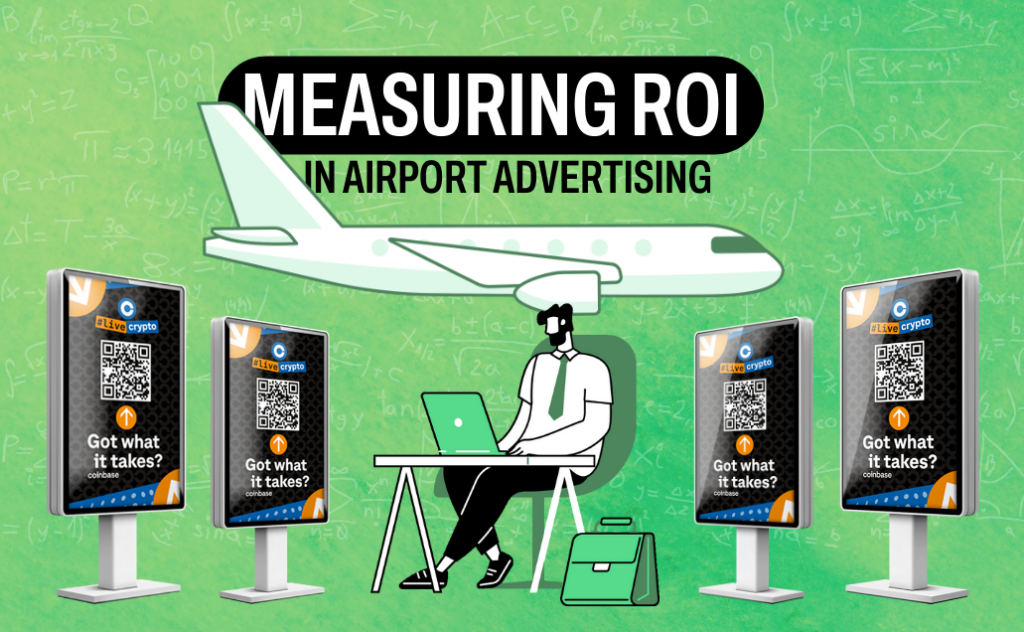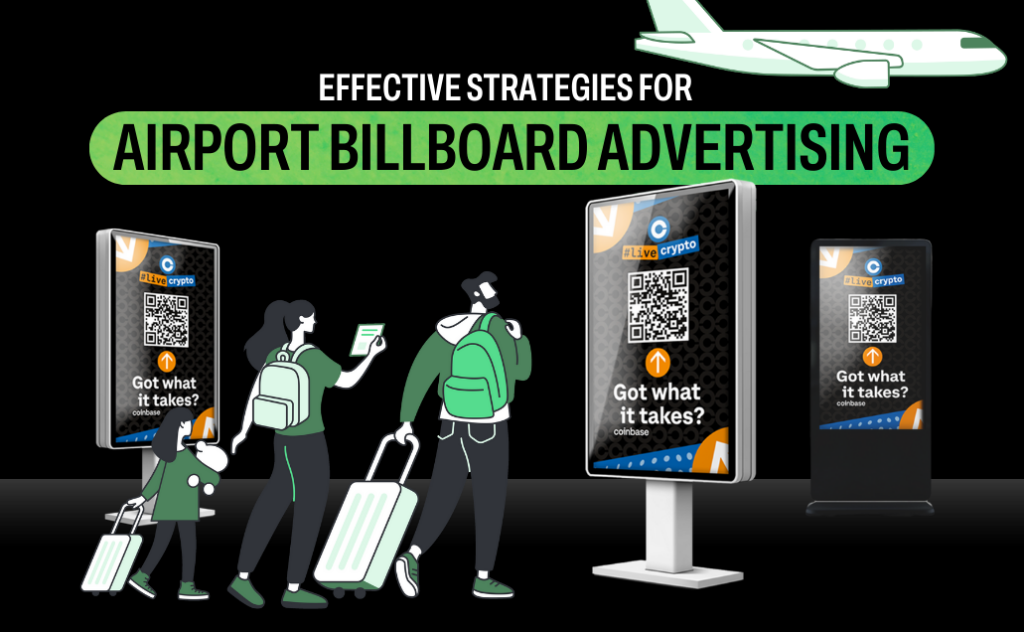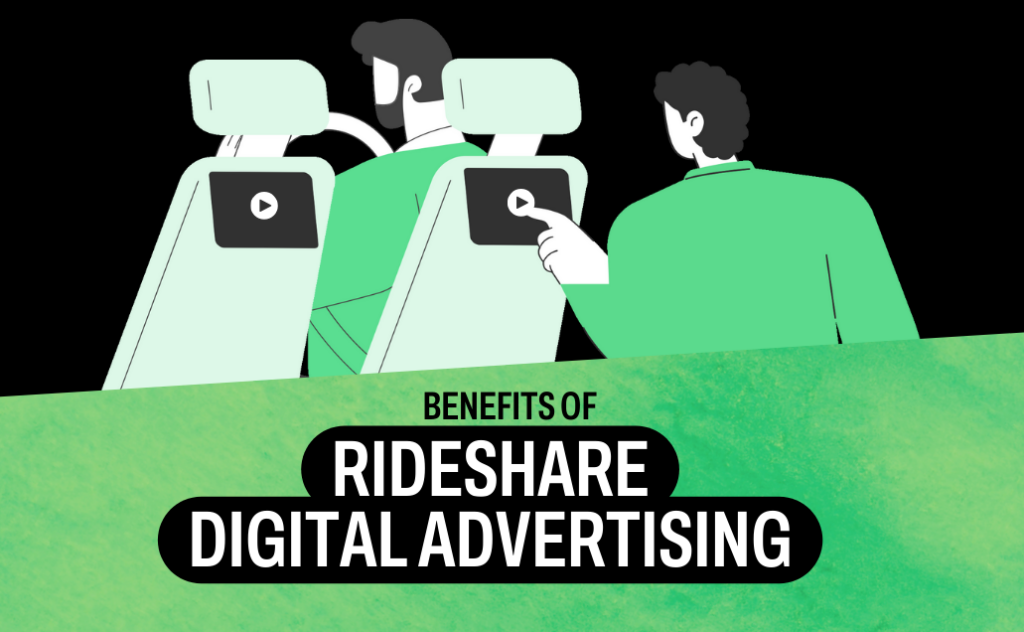Understanding Rideshare Digital Ads and Traditional In-Car Advertising
Rideshare Digital Ads: These ads are displayed on digital screens installed in rideshare vehicles like Uber and Lyft. They utilize advanced digital technology to deliver dynamic, interactive content to passengers. In-cab digital ads offer real-time updates, interactive features, and targeted messaging based on data collected by rideshare platforms.
Traditional In-Car Advertising: This method involves static advertisements placed inside taxis or other vehicles. These ads typically include printed posters, decals, or other non-digital media displayed in the interior of the car. Traditional in-car advertising relies on static content and lacks the interactive and data-driven capabilities of digital formats.
Effectiveness: Digital vs. Traditional In-Car Advertising
Rideshare Digital Ads
- Engagement and Interaction: Rideshare digital ads are designed to engage passengers actively. With features such as touchscreen interactions, QR codes, and real-time offers, digital ads create a more immersive and participatory experience. This interactive approach not only captures passengers’ attention but also encourages them to engage directly with the ad content, increasing the likelihood of conversion.
- Dynamic Content: The ability to update content in real-time is a significant advantage of digital ads. Advertisers can change messages based on location, time of day, or current events, ensuring that the content remains relevant and timely. This dynamic nature enhances the effectiveness of the ads by making them more responsive to changing conditions and audience needs.
- Data-Driven Insights: Rideshare digital ads benefit from data-driven insights that inform targeting and content strategies. By analyzing data on passenger demographics, travel patterns, and engagement metrics, advertisers can create highly targeted and relevant ad campaigns. This precision in targeting improves the overall effectiveness of the advertising efforts.
Traditional In-Car Advertising
- Static Presentation: Traditional in-car ads are limited to static, printed content. While these ads can be visually appealing, they lack the interactive elements and dynamic capabilities of digital ads. The static nature means that the content remains unchanged throughout the campaign, potentially reducing its relevance and impact over time.
- Limited Engagement: Without interactive features, traditional in-car advertising relies on passengers’ passive viewing. Engagement is limited to the visual appeal of the ad and its ability to capture attention through design and placement. This passive approach may not be as effective in encouraging active participation or driving immediate action.
- Lack of Real-Time Updates: Traditional in-car ads do not offer the flexibility to update content in real-time. Once the ads are printed and placed, they remain static until the next campaign or update. This lack of flexibility can be a disadvantage in responding to changing market conditions or tailoring messages to current events.
Reach: Digital vs. Traditional In-Car Advertising
Rideshare Digital Ads
- Targeted Audience: Rideshare digital ads leverage the extensive data collected by rideshare platforms to target specific audience segments. Advertisers can reach passengers based on demographics, travel behavior, and location, allowing for highly targeted advertising. This precision ensures that the ads are seen by the most relevant audience, enhancing the effectiveness of the campaign.
- High Frequency: Rideshare digital ads benefit from high-frequency exposure due to the constant flow of passengers using rideshare services. With millions of rides completed daily, digital ads have the opportunity to reach a large and diverse audience frequently. This high frequency of exposure increases the likelihood that passengers will see and engage with the ads.
- Geographical Flexibility: The reach of rideshare digital ads extends across various locations and cities where rideshare services operate. This geographical flexibility allows advertisers to target specific areas or regions, making it easier to run localized campaigns and reach audiences in different locations.
Traditional In-Car Advertising
- Limited Targeting: Traditional in-car advertising lacks the advanced targeting capabilities of digital ads. While it can reach a broad audience, it does not offer the same level of precision in targeting specific demographics or behaviors. Advertisers rely on general placement strategies rather than data-driven targeting.
- Fixed Placement: Traditional in-car ads are confined to the vehicles they are placed in. The reach is limited to the specific taxis or cars carrying the ads, which may not offer the same scale or frequency as rideshare services. This fixed placement can also limit the ability to reach a diverse audience.
- Geographical Constraints: The geographical reach of traditional in-car advertising is restricted to the areas where the taxis or vehicles operate. Advertisers may find it challenging to run campaigns that span multiple regions or cities, limiting the overall reach of the campaign.
ROI: Digital vs. Traditional In-Car Advertising
Rideshare Digital Ads
- Cost Efficiency: Rideshare digital ads offer cost-efficient solutions with measurable ROI. The ability to track metrics such as impressions, engagement rates, and conversions provides valuable insights into campaign performance. This data-driven approach allows advertisers to optimize their campaigns and allocate resources more effectively.
- Measurable Impact: Digital advertising platforms used in rideshare services come equipped with advanced analytics tools that enable precise measurement of ROI. By analyzing performance data, advertisers can assess the return on their investment and make informed decisions to improve campaign effectiveness.
- Flexibility and Adaptability: The flexibility of digital ads allows for real-time adjustments based on performance data and market conditions. Advertisers can quickly adapt their strategies to optimize ROI and ensure that the advertising spend delivers maximum value.
Traditional In-Car Advertising
- Higher Upfront Costs: Traditional in-car advertising often involves higher upfront costs for printing and placement. The static nature of the ads means that the initial investment must cover the entire campaign period, with limited flexibility for adjustments.
- Difficulty in Measuring ROI: Measuring ROI for traditional in-car advertising can be challenging due to the lack of real-time metrics and data. Advertisers may rely on estimations and indirect measures of effectiveness, which can make it difficult to accurately assess the impact of the campaign.
- Limited Flexibility: Traditional in-car ads offer limited flexibility in terms of content updates and campaign adjustments. Once the ads are in place, making changes requires additional costs and efforts, which can impact the overall ROI.
Conclusion
When comparing rideshare digital ads with traditional in-car advertising, it is clear that digital ads offer significant advantages in terms of effectiveness, reach, and ROI. The interactive and dynamic nature of rideshare digital ads provides enhanced engagement, targeted reach, and measurable impact, making them a powerful tool for modern advertising. In contrast, traditional in-car advertising, while still valuable, lacks the flexibility, targeting precision, and real-time capabilities of digital ads.
For brands seeking to maximize their advertising efforts and connect with consumers in innovative ways, embracing rideshare digital advertising represents a forward-thinking approach that leverages the unique opportunities of the rideshare environment. By leveraging the benefits of rideshare digital ads, brands can achieve greater engagement, optimize their advertising spend, and drive meaningful results in today’s competitive marketing landscape.




